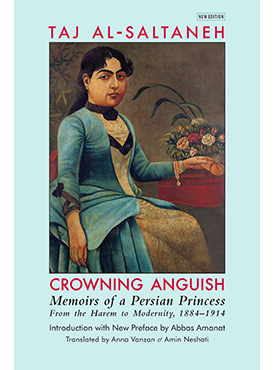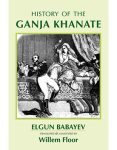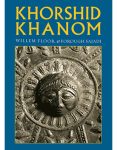About the Book
The life of Taj al-Saltana, daughter of the ruler of Iran, Naser al-Din Shah Qajar, epitomized the predicaments of her changing era. Overcoming her limited education within the harem walls, Taj chronicled a thirty-year span in the life of a generation that witnessed a shift from traditional order to revolutionary flux. It is as though she had chosen this moment to recall her personal history–a tale filled with “wonder and anguish”–in order to record a cultural and political leap, symbolic of her time, from the indulgent, sheltered, and often petty world of her father’s harem to the puzzling and exposed, yet emotionally and intellectually challenging world of a new Iran.
Now almost one hundred years later Taj’s memoirs are relevant and qualify her not only as a feminist by her society’s standards but also in comparison with feminists of her generation in Europe and America. Beyond her fascination for the material glamors of the West at the turn of the twentieth century–fashion, architecture, furniture, the motorcar–she was also influenced by Western culture’s painting, music, history, literature and language. And yet throughout this time she kept her bond with her own literary and cultural heritage and what she calls her “Persianness.”
Despite her troubled life of agony—an unloving and harsh mother; a benevolent but self-indulgent father; an adolescent, bisexual husband; separation from her children; financial difficulties; the stigma of leading a libertine lifestyle and the infamy of removing her veil—Taj’s is a genuine voice for women’s social grievances in late-twentieth century Iran, and one that reveals a remarkable woman in her own right.
This new paperback edition, now also available as an eBook, coincides with the release of the audio book read by the Iranian-American actress Kathreen Khavari. Abbas Amanat, who edited the book, and wrote its superb introduction and historical biographies, has written a new preface that adds details that have emerged since 1993 about Taj al-Saltaneh’s tragic life after 1914.
Audio is read by Kathreen Khavari
Reviews
- Center for Iranian Research and Analysis Newsletter (Fall 1994)
“This book consists of two parts. The first hundred pages are an introduction by Abbas Amanat. The second part is the translation of Taj Al-Saltana’s memoirs by Vanzan and Neshati.
Taj Al Saltana was one of daughter’s of Naser al-Din Shah Qajar. She lived in the Shah’s harem until the age of thirteen when she was married and sent off to her fatherinlaw s residence. This book is the collection of Taj’s childhood and adolescent memories. She provides a vivid picture of her childhood, her relationships with her father, the shah who loved her, her mother who did not show any affection towards her, her nanny, and the rest of her cohabitants in the harem. Living in the harem, she provides a valuable account of its socioeconomic life. Women’s relationships with each other, with the Shah and with their male trustees are described very well. Taj presents a refreshing view of how the Qajar dynasty operated the country’s affairs. The corruption of the bureaucracy, foreign intervention, and the royal courts’ inability to deal with socioeconomic changes are all aspects of Qajar rule that Taj explains in her memoirs.
Taj’s memories of her own personal life and the life of her cohabitants in the harem disclose how the traditional royalty of Iran managed their life. She was a melancholic and distressed princess who had the economic opportunity by virtue of being one of the Shah’s daughters to become educated in literature and philosophy. This became a source of both her happiness and anguish. While she is critical of socioeconomic and political aspects of Iranian society as well as patriarchal arrangements, she remains docile and subjects herself to exploitative relationships. This contradiction haunts her until her premature death. Her childhood memories of harem life demystify Western accounts of mysterious Persian women. Unintentionally she discloses an important socioeconomic relationship between the royal court and the commoners. She explains that many of the Shah’s wives were from low income classes. For those young women to marry the Shah was to liberate themselves from harsh economic reality. Taj is more critical of the women of the harem and how vicious they were towards each other rather than being critical of her father and his unlimited lust for young women. It seems as if she accepted her fathers’ mischiefs as inherent rights of the monarch. Her criticisms of socioeconomic and political problems are directed at the Shah’s associates and vazirs and not at the Shah himself. The oppression of women is explained as a cultural problem. Her admiration of European life styles and the women’s suffragist movement is quite similar to those modernists of her time as well as the contemporary secular intelligentsia. She sees veiling as the most problematic aspect of women’s oppression. For her unveiling is the dynamic force for women’s liberation. She says “The sources of the ruination of the country, the cause of its moral laxity, the obstacle to its advancement in all areas, is the veiling of women…. The veiling of women in this country has spawned and spread thousands upon thousands of corrupt and immoral tendencies.” She admires the relationships between women and men in the villages who work side by side on the farm. She appreciates unveiled farm women and their productive role yet while she unveiled herself she chose not to be economically productive all her life. Throughout the book the contradiction between her knowledge and criticism of sociocultural aspects and her actions and life style is clearly manifested. While she is rightfully critical of Iranian socioeconomic and cultural factors, she continued to play her traditional role. Tai does not mention her public role as an agitator for women’s liberation or an organizer for any type of women’s organization. It seems as if she saw women’s liberation as a move from unveiling to wearing western clothing and corsets which is as problematic as wearing a veil. Taj ‘s memories are a sad story of a woman who reached a certain degree of political and sexual consciousness yet lived and died inside the walls of prisons built by patriarchal values and practices. Her love affairs were not signs of liberation but anger and rebellion against those walls which finally crushed her without being slightly scratched.
In the introduction Amanat introduces Taj as a representative of the emerging secular intelligentsia and a feminist in the aftermath of the Constitutional Revolution. Amanat describes the historical account and the political characters of the time very interestingly. However, Amanat’s understanding and interpretation of Taj’s memories is painted with his own wish thinking on the question of secularism as a solution sociopolitical problems and Shi’i Islam as the obstacle to sociopolitical reforms. He believes that the restrictions which have been imposed on women attest to the persistence or revival of old religious values a institutions. He says “The plight of today’s Muslim women remains strikingly and sadly comparable to that of Taj a century ago.” The most problematic of Amanat interpretations of Taj is his failure to briefly explain the patriarchal system which existed all along and was then encouraged by Muslim male elite. He does not mention the status of and limitations placed on nonMuslim women who lived under the same patriarchal system. His views on secularism and Islam related to women liberation do not allow him to explore either the patriarchal exploitation of women or the socioeconomic problems in their own light. Amanat clearly views women as passive objects rather than as agents of social and political change who may maintain or change patriarchal relationships. In contrast, the class base of an individual has a profound impact on how she perceive herself in relation to her immediate environment. This is manifested in Taj’s account of the royal household. A decadent, backward, yet self indulgent Qajar dynasty must be seen in its own light. The most simple paradigm for explaining socioeconomic and political ills of Iranian society is the analysis provided by intelligentsia which diagnoses Islam as the infective agent. To cure the problem, secularism is the remedy.
A short note on the translation is necessary order to clarify some misunderstandings. Fix throughout the book, when Taj speaks of God translation refers to it as He which is specific Christianity. In Farsi God does not connote a gender specific entity. Second, several words-en’san, a’dl and ba’sSlar-all of which refer to humankind in Farsi are translated as man and mankind which again is gender specific. These criticisms aside, we should be grateful the translators and Amanat for bringing this work before the public.”
- Booklist (September 15, 1993)
“A Thousand and One Nights meets Raise the Red Lantern in this tale of growing up among royal wives and concubines in what is now Iran. Set in a time when women of her class were cloistered, this princess’ story is a rare account of day-to-day life in a sheik’s palace, from a terrifying betrothal ceremony when its heroine was eight though a frustrating adolescence spent married to a bisexual philanderer to relations with the other women of the place, in which rivalry and political jockeying ran rampant. What distinguishes Taj’s memoirs from other Iranian court literature of the same time (the 30 years before World War I) is their honesty and thoughtfulness, says Yale scholar Abbas Amanat in his lengthy introduction. Amanat also sees the book as pivotal of its kind and the princess as one of the first liberated Iranian women, at least in her thoughts. Although perforce a subscriber to a rigid Islamic system, Taj saw and recorded a changing society, dissected the role of women in it, and questioned its conventions.”
- Habibi: A Journal for Lovers of Middle-Eastern Dance and Arts
“Several books written by children of Qajar (19th century Iranian) royalty have been published in recent years. Crowning Anguish is, to my mind, the book most likely to be of interest to Habibi readers. It is an extraordinary memoir written by Taj al-Saltana, daughter of Naser al-Din Shah (ruled 1848-1896), the fourth king of the Qajar dynasty (1785-1925). Born in 1884, Taj’s life spans the dying decades of Qajar rule and its ultimate end, first in the Constitutional Revolution of 1906, and in the takeover of Reza Shah Pahlavi in 1925.
The memoir is in the form of a tale told to her teacher in explanation of some of her behavior and life choices; it chronicles, from the perspective of a child and young woman in her father’s, and later her husband’s, anderun (private family quarters), a period of turmoil and change in late nineteenth, early twentieth century Iranian history. In it, Taj gives fascinating glimpses of Qajar court life, the intrigues, dangers, liaisons, and struggles for control.
Among the most interesting aspects of the memoir are Taj’s education and feminism. She received some private tutoring in the anderun, but was largely self-educated, and read voraciously from classical and contemporary European literature in translation. As a result, she developed a notion that the best path for Iranian families would be for Iranian women to discard the veil, and receive education sufficient to allow them to work outside the home. Her view was that by doing so couples could choose to marry for love, thus reducing the many social ills that result from arranged marriages, such as marital infidelity and divorce. Women could contribute to the family and national economies, rather than staying at home bored and getting into trouble.
While the memoir focuses on Taj’s life, it depicts vividly some of the most interesting political events of late-nineteenth, early-twentieth century Iran, which are oddly reminiscent of events of more recent times. In particular, the call during anti-crown protests of 1891-92 for the overthrow of the Shah and the raising of the highest Shi’ite leader to the position of “Supreme Exemplar” seem to mirror the events leading to the (counter-) revolution of 1979.
Dancers and musicians do not appear to advantage in these memoirs. Taj’s own attitudes accurately reflect the general attitude towards professional Performers, though perhaps colored by the fact that her own husband had affairs with one of the dancing girls from the visiting Russian circus, and also with a male dancer. During the reign of Taj’s brother, Mozaffar al-Din Shah, the family was shocked by the “constant coming and going of female musicians, and prostitutes who disguised themselves as musicians.” Taj compares this with the situation during her father’s life: “I could not remember female musicians in my father’s harem, with the exception of wedding feasts, and then it was only male musicians. It was impossible to find a single whore among them.” Taj describes a boy dancer: “Renowned throughout the town, the boy had a thousand adoring lovers. Being a dancer, however, he was unworthy of being anyone’s beloved.”
Taj herself was (in her own estimation) an accomplished musician; but, since she restricted her musical performances to her own amusement, she escaped the censure heaped upon professionals. She studied tar (Persian long-necked lute) with Mirza Abdollah, one of the great performers of the Qajar era; she claims that her tar-playing skills soon surpassed those of her teacher! She was, apparently, much admired (but not for her music!) by one of the greatest of contemporary Iranian composers, ‘Aref-e Qazvini, whose rakish photograph also appears in the book.
The book begins with a 100-page introduction by Abbas Amanat that provides a fine description of the historical context of the memoirs; most of the terminology, personalities, and cultural tidbits needed to follow the memoirs are included. The book involves a long list of dramatis personae; an alphabetized set of biographical sketches of each of the major characters is provided at the end, and is a big help. The reader new to things Iranian might do well to read it immediately after the introduction, before going on to the memoir itself.
The illustrations of Crowning Anguish alone would make the book of great interest to aficionados of Middle Eastern history, culture, and arts. It includes many photographs and paintings of Iranian court ladies in their shalite (short skirt) attire, as well as depictions of court life, palaces, and ministers. Among my favorites are the etching of a Persian woman in shalite on page 26, the etching of Ziba Khanum in shalite on page 31, the famous posed photograph of ‘Aref on page 57, and the mid-life photo of Taj herself in European dress on page 311.”
- Library Journal (September 1, 1993)
The daughter of one of the last Qajar rulers of Iran, Taj al-Saltana penned a memoir in 1914 recounting her life and experiences in the royal harem. Inspired by Western writings and disillusioned by incidents in her own life, Taj attacked many traditions, including the segregation and inferior status of women in Persian society. Now the interesting fragments of her writings have been compiled in a book designed to appeal to an audience intrigued by life “behind the veil.” While the feminist sentiments of the young woman appear modern, it is the simplicity and directness of Taj’s personality that makes the work memorable. The abrupt end of her memoirs during an account of her disintegrating marriage is a disappointment. An introduction preceded the text and a useful section of historical biographies follows. Recommended for Middle East collections.
- The Bookwatch (November 1993)
The life of Taj al-Saltana, daughter of the ancient ruler of Iran, is recounted in a gathering of memoirs of her life from 1884-1914. These were the days of harems, changing social and political climates, and evolving female lives: Taj could be considered a feminist by the standards of her times, and her account will prove readable not only to adults, but by high school students.
- Los Angeles Times (November 14, 1993)
Born in 1884 to Naser al-Din Shah Qajar, ruler of Iran, Taj al Saltana was, in her own words, a “beautiful, adorable child.” But not for long. Married at age 13 (“Oh what a cursed day, what an evil hour!”) to a mean-spirited bisexual brat, she was able to move from the harem that she had been raised in to his house. She began her memoirs, which cover a 30-year period of political and social change in Iran, in 1914. Taj’s account of her childhood in the royal harem (andarum) is the only account so far by an insider. The Golestan Palace in central Tehran was surrounded by the high walls of the Royal Citadel (Arg-e Saltum). Guarded by an army of eunuchs, the Arg housed 80 wives and roughly 800 maidservants. Around the harem, women wore white tights, short skirts, and open blouses. “In the course of the year,” writes Taj, “they were not visited by any grief, difficulty, pain or bitterness.” I’m not sure that Taj, self styled “madame de salon” in her adult life, is really the “ardent feminist” that Abbas Amanat describes in his introduction, but the seeds of discontent sown in that protected childhood certainly grew to the half-hearted rebellion of messy liaisons and libertine lifestyle that characterized her childhood.
- Times Literary Supplement (March 4, 1994)
Of the handful of surviving memoirs from late nineteenth century Qajar Persia perhaps those of Taj al-Saltaneh, daughter of Nasser alDin Shah Qajar, has stirred the greatest amount of interest among historians and general readers alike. Due to a resurgent curiosity about harem life, and capturing the imaginations of modern Western feminists, Taj’s rather fragmented and slim autobiography has seen several translations and numerous analyses in recent times. Despite certain textual inconsistencies and questions regarding its authenticity, one reads the memoirs with an overriding sense of peering into a littleknown world, deprived as we are of firsthand accounts relating to that period, and to women of Taj’s circumstances.
In somewhat unusual and cumbersome style, Taj’s memoirs, written in 1914, cover a thirty-year span of a rapidly changing era. She takes us from the sheltered comfort of the opulent Qajar court under its most charismatic ruler, to the disheartening close of the Constitutional Revolution, with its shattered illusions and unanswered questions. She relates her life of troubled agony an unloving and harsh mother, a benevolent but selfindulgent father; an adolescent, bisexual husband, separation from her children, financial difficulties, the stigma of leading a libertine’s life: all bear witness to the contradictions of women’s predicaments in changing times. As if to echo this “anguish”, she embodies in her own personal history the rise and fall of dreams, and the frailty of the human condition.
Our introduction to harem existence begins with her childhood memories, which ironically reinforce orientalist accounts of a comically puerile atmosphere generated by idle women and a whimsical but omnipotent ruler. The emphasis on the freakishness of harem customs, as opposed to its structure and hierarchy (of which we know from other sources), leads us to believe that she deliberately wrote for an audience, and with a view to justifying her ideas on women, as well as certain elements of her later demise.
Amanat’s superb preface, contextualizing an otherwise limited account for the uninitiated, points to the strong influence of contemporary translations and other European literature available to women of Taj’s aristocratic upbringing. The spirit of European romanticism, a penchant for melodrama and typical nineteenthcentury female “hysteria” pervade much of Taj’s writing on her personal circumstances, allowing her to lapse into self-righteousness and selfpity side by side with her insightful analysis of the condition of Persian women. Metaphors on the “darkness of the harem”, “bondage of half the nation’s population” and mothers as educators of future generations are strongly reminiscent of missionary discourse of the time, an element which colours her writing with a certain critical detachment. Her iconoclastic style confirms her as an anomaly, an outsider from within, who from her privileged position felt entitled to denounce many of the ageold traditions sustaining herself and her culture, yet without which she felt diminished and tortured, neither the enlightened and liberated persona of a George Sand, nor the firmly rooted RezaShahstyle feminist trendsetter.
A curious blend of the reconstructive and reflective, Taj al Saltaneh’s memoirs bring home the intense conflicts of a life straddling the harem and modernism. Sadly, she sees her initiation into “knowledge” as the source of her demise, partly machinated by destructive forces in an attempt to “toss our happy, free lives into a fresh perplexity and turmoil”.
With a translation that only occasionally stumbles in rendering a difficult text, the publishers have succeeded in producing a handsome volume well stocked with plates and illustrations (although Sevruguine’s remarkable photos are conspicuously absent). Amanat’s useful historical sketch enables the book to be appreciated by the general reader as well as the student, reminding us yet again, however, by means of ample glossaries, notes, biographies and so on, of the inevitable need to make one wellknown, aspect of a Middle Eastern culture familiar to the West.
- Belles Lettres (Vol. 9, Number 3)
Taj Al-Saltana’s Crowning Anguish is the memoir of a daughter of the ruler of Iran. From 1884-1914, al-Saltana survived both traditional and revolutionary times, in and outside the harm. She describes her everyday life as a child, her dysfunctional (sound familiar?) family-a harsh mother and self-indulgent father, and the extended emotional support of the harem system. Through al-Saltana, the reader learns about the little-known political and economic power of the harem women and about the historical shifts in power that took place throughout Iran during those years. When she questions the values of her culture-its class structure, or the spoiling of harem children-she is genuinely seeking the truth as a tentative concept, not merely arguing a political platform.
As revolution sweeps Iran, al-Saltana’s life shifts in many unexpected directions for which she is intellectually unprepared. The assassination of her father, her marriage, her exposure to Western society and art-all of these strengthen her by challenging her presumption. Al-Saltana emerges from each conflict more thoughtful. She is relentless in her schemes to improve the lots of her people and to deepen the strength of the Persians. As egalitarian and feminist for practical and personal reasons, she eventually removes her own veil, destined to live her life in honesty and in response to her growing consciousness. Met by critics, she explains her actions through these memoirs.
Numerous photographs help the reader place the settings and visualize the people in al-Saltana’s life. The introductory historical essay provides a context for the memoirs, but it is not thorough and is much too long (100 pages): skim it after you read the text.
- Middle East Journal (Vol 40, #3)
In this startlingly frank account of life in a Qajar harem, Taj al-Saltana exposes herself and the royal Persian court to public scrutiny. Born in 1883, Taj al-Saltana was the daughter of Nasir al-Din Shah, the fourth king of the Qajar dynasty and ruler of Iran for half a century (1848-96). Taj al-Saltana grew up in the harem in Golestan Palace, the principal royal residence. She was isolated from the outside world, guarded by eunuchs, and constrained by cultural conventions that ordained the veiling and seclusion of women. Relatively well-educated for her time, Taj al-Saltana could read Western literature, play the piano and the tar (Persian lute), and paint. Yet, she was acutely aware of the limitations of her education and of the debilitating effects of life in the harem on personal growth and development, and on any strivings toward autonomy or independence.
Living at a time when the bonds of religion were relaxing under the pressure of Western secular influences, Taj al-Saltana flouted convention by unveiling her face and leading a relatively independent life. For this she was castigated, vilified, and roundly condemned by her relatives and members of her social class. Her mother accused her of being a bahi (an apostate), her brother, Mozaffar al-Din Shah, was furious with her for her “wantonness,” and she herself anticipated censure for the “illicit proposals she put forth to the women” (p. 292).
While writing an autobiography in the early 20th century would have been a bold and unprecedented act for any Iranian woman, for Taj it was doubly bold in that she was a Qajar princess and in a position to describe daily life in the royal harem. This she did candidly, not only revealing her innermost thoughts and feelings, but also expressing often uncomplimentary views on her country and her countrymen. Her work was not published until 60 years after her death.
Taj’s memoirs clearly reveal her inner conflicts. She was an early advocate for the education of women, for their unveiling, and for their participation in the country’s work force. Nevertheless, Taj al-Saltana was torn between new and old values. Her self-portrait reveals profound psychological suffering born of a crisis of faith and fed by feelings of frustration, anger, and guilt. She tried to commit suicide-three times. Gifted and beautiful, she was sheltered, pampered, and indulged by her nanny and her father, and by the harem system that provided her with endless material benefits, but little moral, intellectual, or spiritual guidance. Yet, she suffered immeasurably from having an unloving mother and an uncaring, immature husband. Her eventual divorce resulted in her separation from her children and serious financial problems. She endured the peculiarly unremitting scorn and opprobrium reserved for women who dared to transgress the conventions of the times.
While Taj al-Saltana rails against the restrictions placed on women in her country, she unwittingly reveals the exceptional power that some women in the harem managed to wield. Her account reveals exceptional political awareness among the women in the harem, where rivalries blossomed, alliances were formed and broken, and political fortunes rose and fell. It also reveals a peculiar egalitarianism in the Qajar court, whereby peasant men and women were able to rise to positions of great power and wealth.
A thoughtful and informative introduction by Abbas Amanat places the events described in Taj’s memoirs in their historical and cultural setting. A treasure-trove of photographs of a now bygone era embellish, enhance, and round out this portrait of a fascinating moment in Iran’s long and troubled history.
Excerpt
- Preface
- The Changing World of Taj al-Saltana
In the Harem / The Unhappy Union / New Horizons / Regenerated Hopes
- Crowning Anguish
Birth and Childhood / Education in the Harem / Courtship and Betrothal / Amusements at Court / The Grand Vizier / Preparing for the Jubilee / The Assassination of the Shah / Portrairt of the New Shah / Nuptials and Married Life / Royal European Tours / The Cholera Epidemic / Liberating Women / Pilgrimage to Qom / Breakdown of the Marriage
- Postscript
- Historical Biographies
Sayyid Jamal al-Din / Amin al-Soltan / Zobayda Amina Aqdas / Anis al-Dawla / Kamran Mirza / Mirza Reza Kermani / Mohammas ‘Ali Shah / Mozaffar al-Din Shah / Naser al-Din Shah / Zell al-Soltan
- Further Readings
- Glossary of Terms and Names
- Index
About the Editor
ABBAS AMANAT received his B.A. from Tehran University in 1971 and D.Phil. from Oxford University in 1981. His principal publications include Pivot of the Universe: Nasir al-Din Shah and the Iranian Monarchy, 1831-1896 (1997) and Resurrection and Renewal: the Making of the Babi Movement in Iran, 1844-1850 (1989). He is the editor of Cities and Trade: Consul Abbott on the Economy and Society of Iran (1983), Crowning Anguish: Memoirs of a Persian Princess from the Harem to Modernity (1995) and co editor of Imagining the End: Visions of Apocalypse from Ancient Middle East to Modern America (2002). He also edited The United States and the Middle East: Diplomatic and Economic Relations in Historical Perspective (2000) and co-edited The United States and the Middle East: Cultural Encounters (2002) and Apocalypse and Violence (2004). He is the editor of Mage’s Persia Observed Series, which includes Edward Browne’s The Persian Revolution of 1905-1909. Abbas Amanat is a professor of history at Yale University.
About the Translators
Amin Neshati received his masters degree in English from Boston College. He lives in Annandale, Virginia, where he is the assistant editor of the Journal of Iranian Studies, and is following a career in translation and editing with a special interest in literary and historical texts.
Anna Vanzan was born in and currently resides in Venice, Italy. She received her Ph.D in Near Eastern Studies from New York University.








